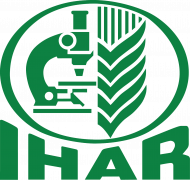Abstract
Experiments were carried out in 2012 and 2013 to answer two basic questions in the testing of potato blackleg causing agents before and after harvest. Firstly, what is the spatial distribution of symptomatic plants in the field. Secondly, what is the distribution of infected tubers over the crates and the resulting detection probability using the standard method of collecting 200 tubers from the top crates in storage. In both years, ten farmers were equipped with a global positioning system (Garmin GPSMAP 62) and asked to register the position of blackleg diseased plants every time they scouted their potato lot for diseases. To answer the second question, potatoes marked with four nails (only visible internally after harvest) and potatoes with a different skin colour were added to one-hectare (ha) fields of seed potatoes in different patterns of aggregation ranging from random, to aggregated distribution, up to one big hotspot prior to harvest. The invisibly marked tubers were used for the unbiased collection of twenty 200-tuber samples from the storage crates, while the coloured skin tubers were used to ascertain, when the potatoes were graded, the distribution of ‘infected’ potatoes over the storage crates. The experiment was carried out with 0.05 and 0.1% disease incidence, in 2012 and 2013, respectively. Twenty two out of 26 fields proved to have a random pattern of diseased plants at harvest, which indicates that the blackleg diseased plants came into the field as infected seed potatoes. Two of the four aggregated patterns detected, started out as random distributions but became aggregated later in time, indicating spread in the field. A random spatial pattern in the field at harvest proved to result in a uniform distribution of infected tubers in the crates and, consequently, sampling of only the top crates for the 200-tuber sample does not introduce any bias. Fifty percent of the infected farmer lots were detected by the Nederlandse Algemene Keuringsdienst inspectors performing their official field surveys, which was a better performance than the 18% detection obtained by the standard 200-tuber sampling method. Only 6 out of 80 samples from the ‘infected’ lots with 0.05% disease incidence level, and 22 out of 80 samples at the 0.1% disease incidence level were detected by the latter method. It was concluded that intensifying the field survey would be cheaper and more successful than enlarging the tuber sample size to increase the probability for detection of infected seed lots.















